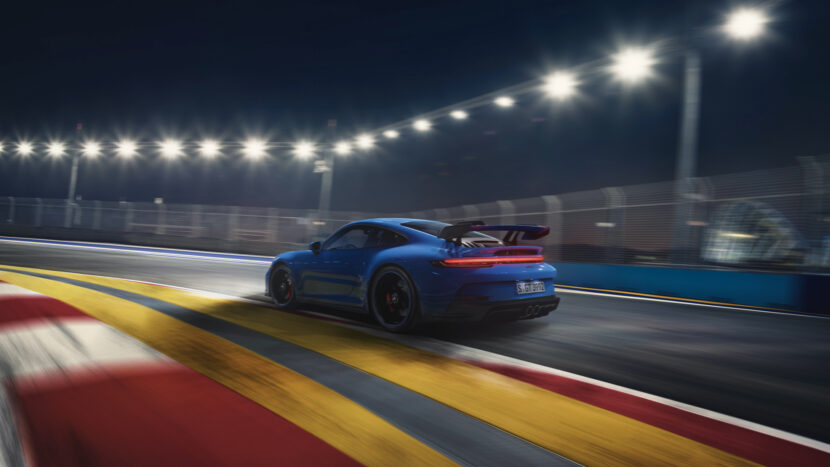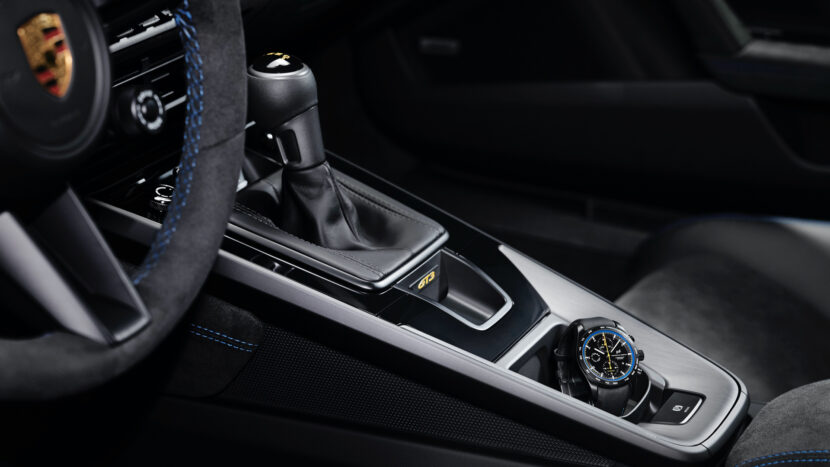Each and every time Porsche unveils a new 911 GT3, the world wakes up and takes notice. For good reason, too. The Porsche 911 GT3 is typically viewed as the benchmark for pure performance machines and it usually is the best in the world at providing a pure, driver-focused sports car experience. This new one, now in its 992-generation, looks to be the very best one yet and, judging by its specs on paper, there doesn’t seem to be anything from BMW, Audi, Mercedes-Benz or really anyone that can keep up.
The Porsche 911 GT3 is, as always, so much more than its spec sheet. However, the spec sheet is a good place to start, so let’s take a look. Just like the previous-generation, this new GT3 gets a 4.0 liter naturally-aspirated flat-six engine with 503 horsepower (510 PS) and 346 lb-ft (469 Nm) of torque. It also gets either an eight-speed dual-clutch PDK gearbox or a six-speed manual. According to Porsche, the 911 GT3 can reach 60 mph in 3.4 seconds (PDK) or 3.7 seconds (manual).
Those power and performance figures might not seem that impressive, as the G82 BMW M4, Mercedes-AMG C63 S Coupe and Alfa Romeo Giulia Quadrifoglio can all match or beat the GT3 on paper. However, the GT3 doesn’t make its money with on-paper specs. Instead, the 911 GT3 dominates with how it handles in practice, on the road.
For the first time ever, the Porsche 911 GT3 will ditch its traditional front strut setup in favor of a double-wishbone front suspension that’s far more sophisticated. It’s a suspension setup similar to the one used on the Porsche 911 RSR race car. This improves camber stability, providing better contact between the front tires and the ground, thus creating better front end grip and better turn-in. It also gains all-new adaptive dampers, more subframe bushings and ball-joints and the spring rate has been stiffened. However, despite being stiffer, the new 911 GT3 is also more comfortable than before, thanks to the new adaptive dampers and new double wishbone suspension.
Another advantage the 911 GT3 has over its rivals is weight. While cars like the BMW M4 have similar power, the 911 GT3 is considerably lighter. The new M4 is a porky Bimmer, tipping the scales at over 4,000 lbs (1,800 kg) in its heaviest configuration. The 911 GT3’s heaviest setup? 3,163 lbs (1,435 kg).
Weight isn’t always such a problem when you have advanced aero, so many heavier modern cars are surprisingly fast due to clever aerodynamics. However, Porsche’s engineers asked: why not have both? The 911 GT3 is both lightweight and has advanced aero, such as its swan-arm-mounted rear wing. The way its swan-arm-style mounts work helps to increase the effective downforce of the wing, which is now up 150-percent versus the previous-gen car. Though, if you want more subtle looks, you can get the Touring pack, which deletes the wing.
Additionally, while the 911 GT3 might lack torque and some power compared to other cars in its price range, it makes up for that with engine character. Its free-breathing flat-six revs to an astonishing 9,000 rpm and it gets a new lightweight exhaust, so you can properly hear all 9,000 revs.
All in, the Porsche 911 GT3 is a stunning, incredibly fast performance machine that provides drivers with a naturally-aspirated engine, which revs to 9,000 rpm, a six-speed manual, rear-wheel drive and proper racing car suspension. It also comes in a killer shade of blue.
Sure, the Porsche 911 GT3 is going to be expensive, around $150,000 or so to start, but it’s well worth it, as it’s likely going to be the finest driving machine on the planet when it debuts, as all GT3s are.
At the moment, BMW has nothing that can compete. Its M4 isn’t good enough, though it is significantly cheaper. However, the M8 isn’t good enough either and that’s more expensive. However, the Bavarians might just have a trick up their sleeve — the BMW M4 CSL.
There’s a real possibility that BMW debuts an M4 CSL within another year or so and the M2 CS has already proven that the M Division still knows how to make a special driving machine, one that can punch way above its weight class. So with similar power, a lightweight diet and better suspension, a potential M4 CSL could absolutely keep up with the GT3. BMW M just has to actually make it.










































































